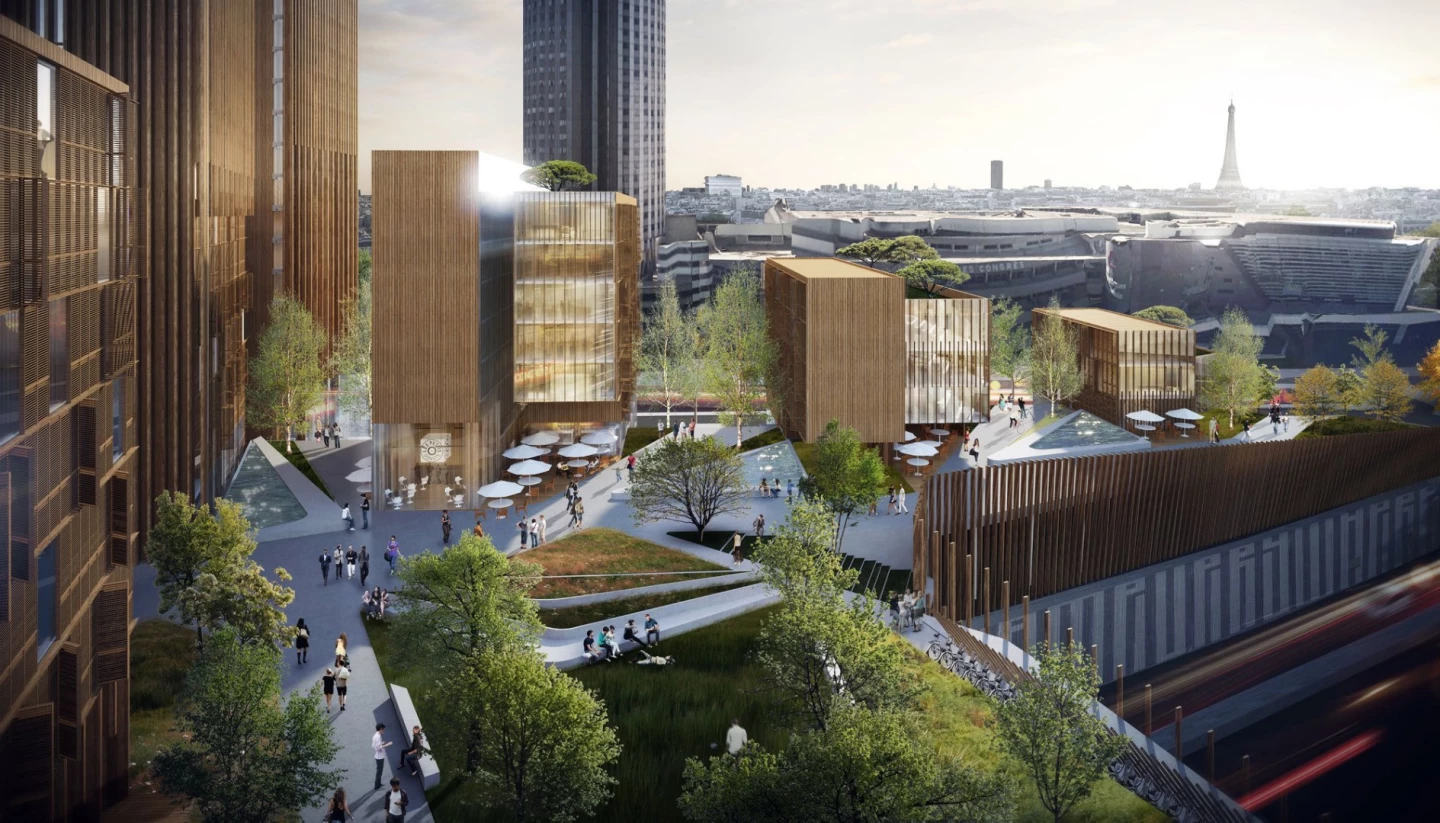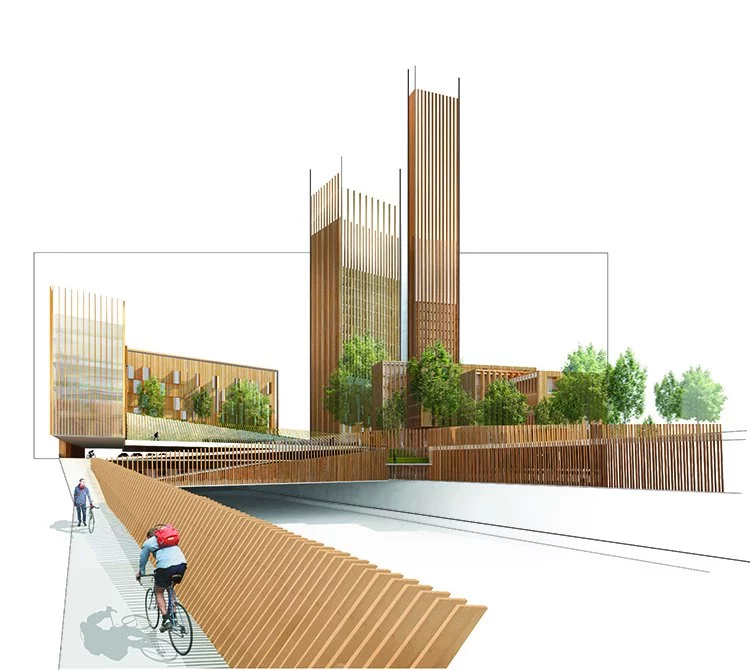The Réinventer Paris competition was conceived to promote new architectural ideas for the city's future, and provided the impetus behind Planning Korea's L’air Nouveau de Paris and Vincent Callebaut's 2050 Paris Smart City. A new entry, by Michael Green Architects, imagines the world's tallest wooden building for the city.
Details on the project are very light at this early stage, but Vancouver's MGA has conceived a 35-story mixed-use tower, dubbed Baobab, that would use the firm's wood construction methods that can reportedly outperform steel in a fire.
Located on a 6,450 sq m (69,427 sq ft) plot on Boulevard Pershing, in Paris' 17th arrondissement, the project would include the main tower and some smaller wood buildings nearby, and feature social housing, a student hotel, market, a bus station, and electric car charging points.

"Our goal is that through innovation, youthful social contact and overall community building, we have created a design that becomes uniquely important to Paris," says MGA. "Just as Gustave Eiffel shattered our conception of what was possible a century and a half ago, this project can push the envelope of wood innovation with France in the forefront. The Pershing Site is the perfect moment for Paris to embrace the next era of architecture."
The Réinventer Paris shortlist is due to be announced this (northern) summer, and the eventual winner will be given an opportunity to try and work out a deal with city officials to build their proposal.
Source: MGA via Arch Daily






